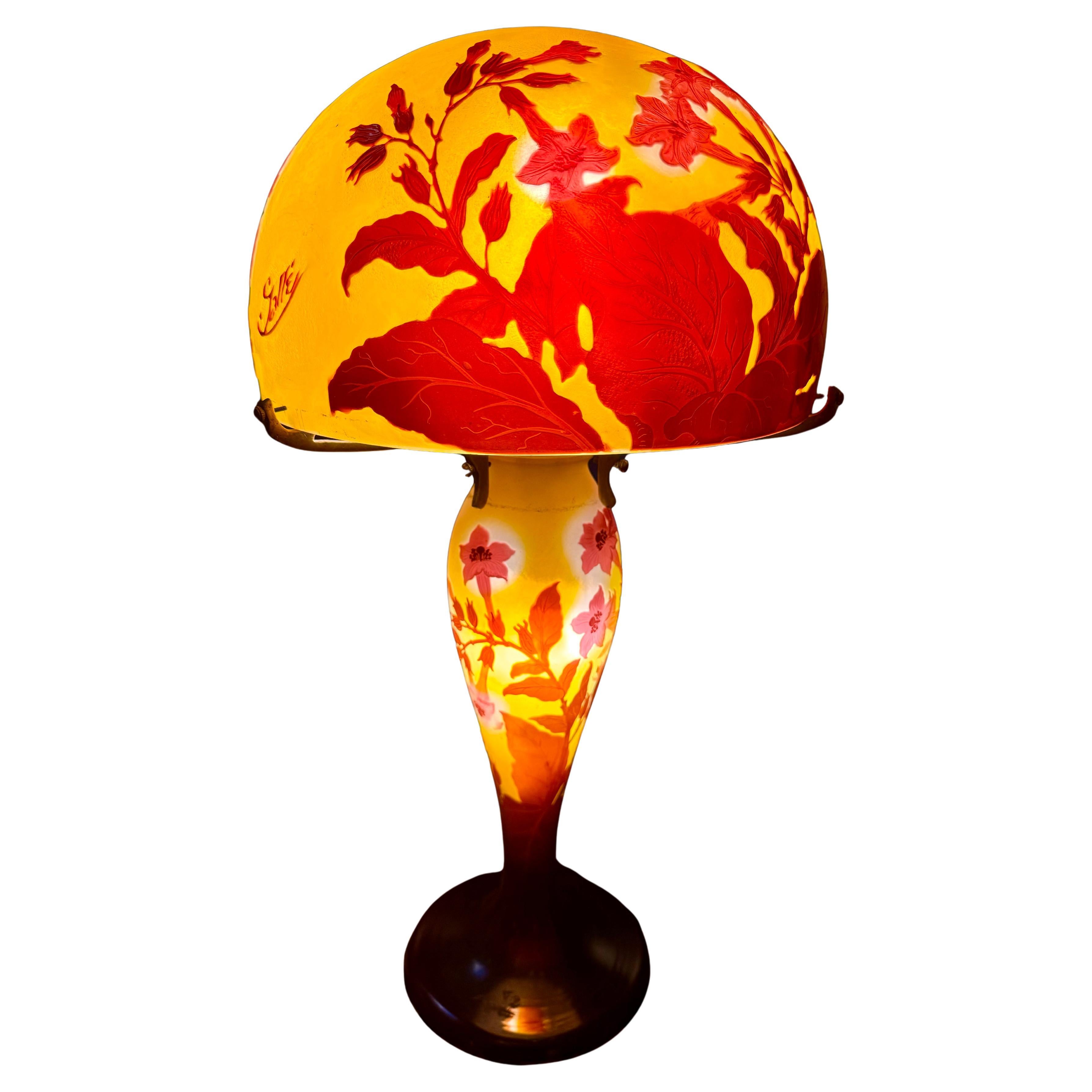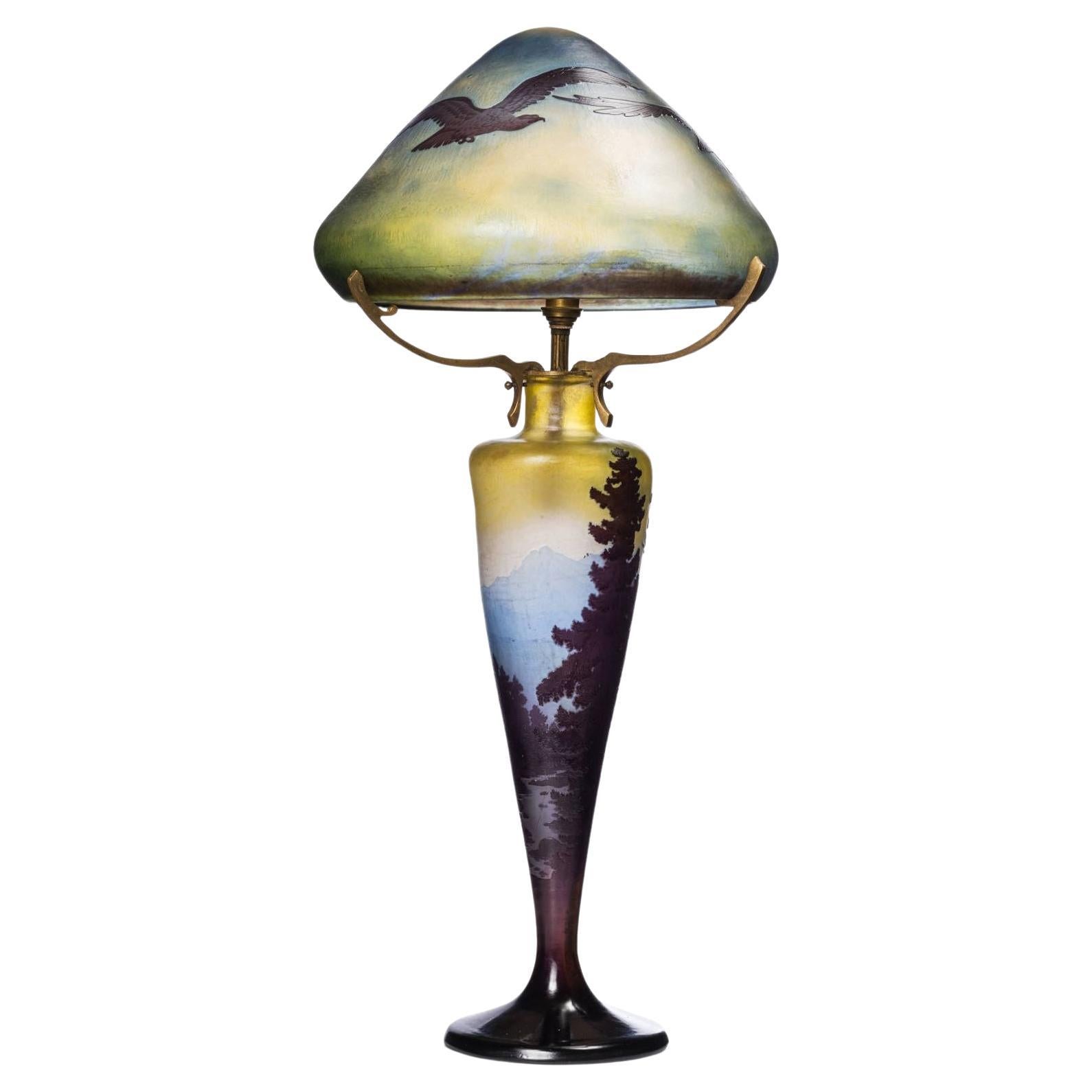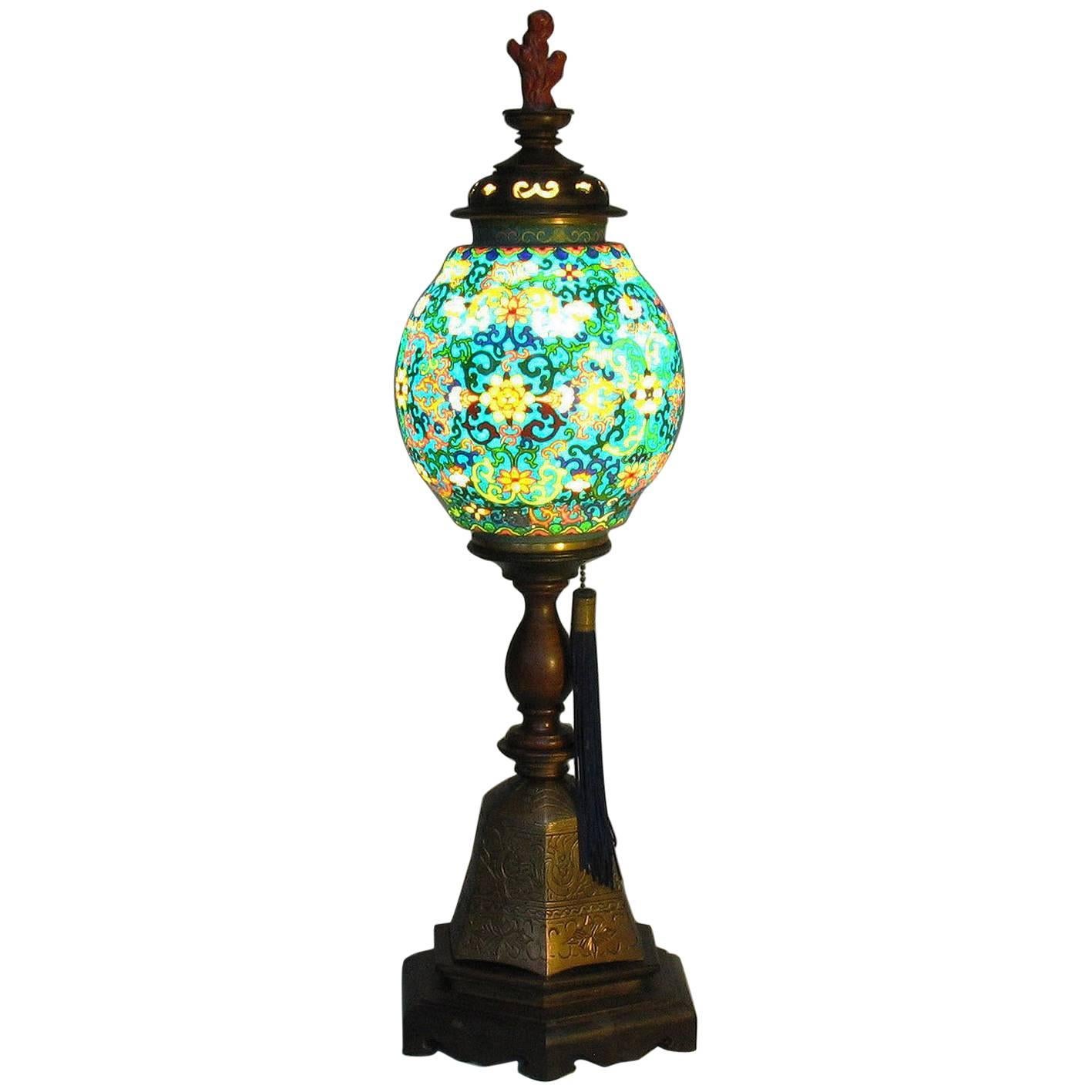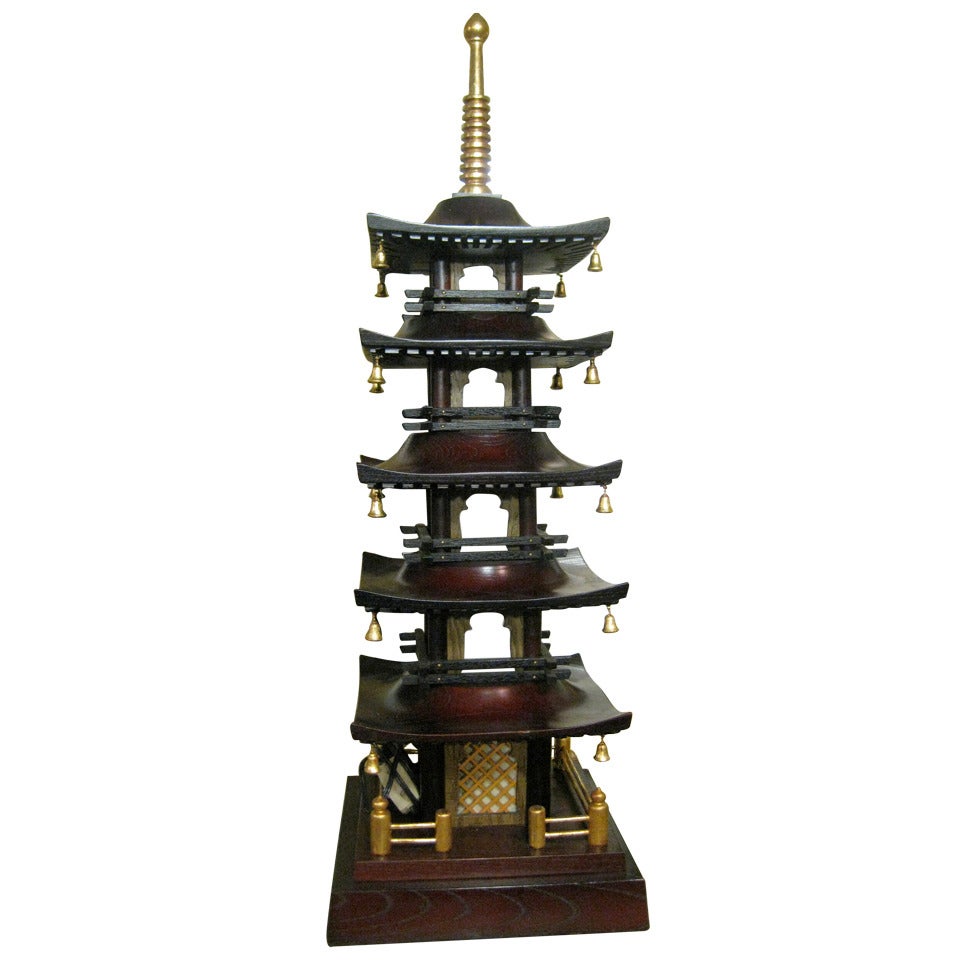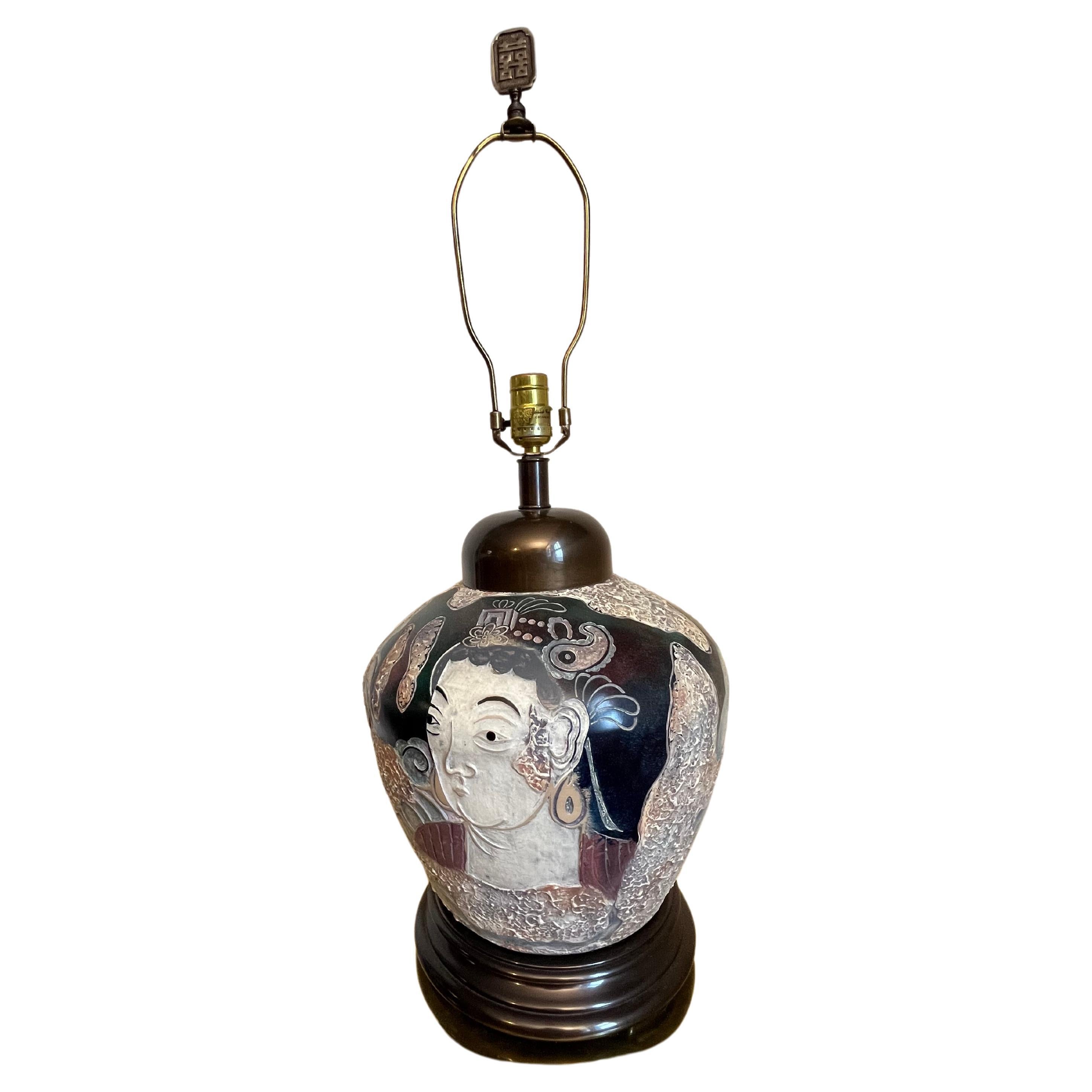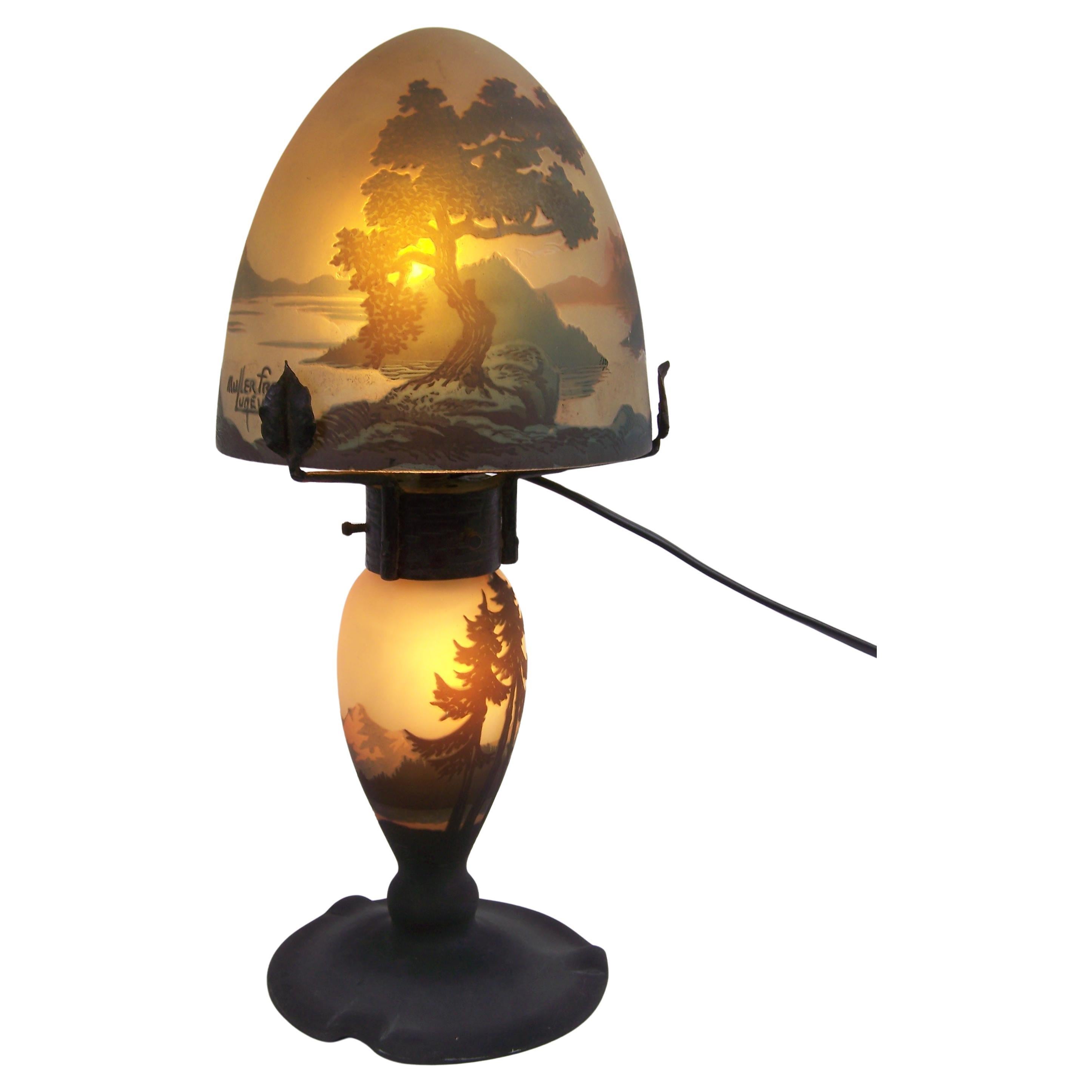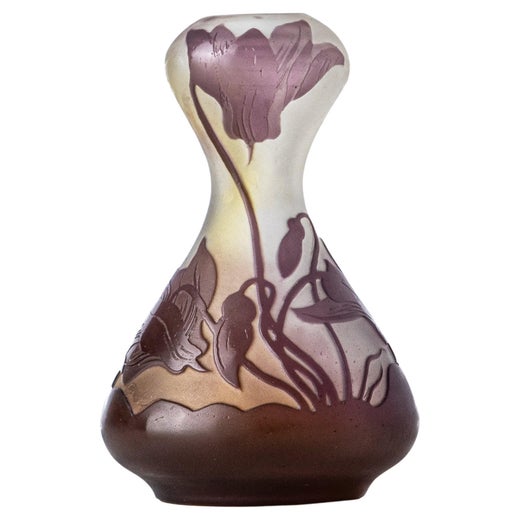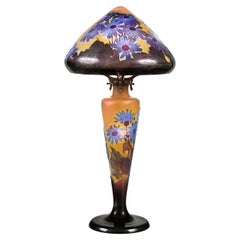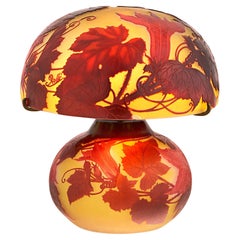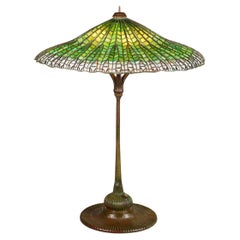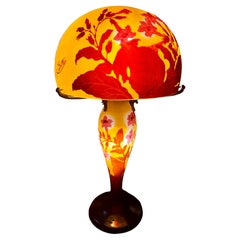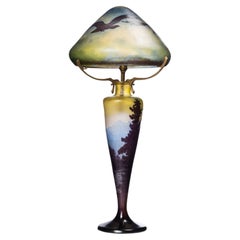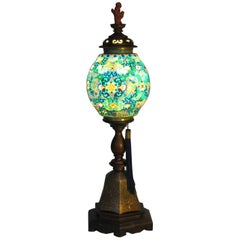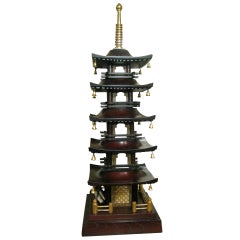Pagoda Lamp By Émile Gallé
About the Item
- Creator:Émile Gallé (Maker)
- Dimensions:Height: 10.25 in (26.04 cm)Width: 12.25 in (31.12 cm)Depth: 3.5 in (8.89 cm)
- Lampshade:Included
- Style:Art Nouveau (In the Style Of)
- Materials and Techniques:
- Place of Origin:
- Period:
- Date of Manufacture:Circa 1900
- Condition:
- Seller Location:New Orleans, LA
- Reference Number:Seller: 31-82851stDibs: LU891137916672
Émile Gallé
“Art for art’s sake” was a belief strongly espoused by the celebrated French designer and glassworker Émile Gallé. Through his ethereal glass vases, other vessels and lamps, which he adorned with botanical and religious motifs, Gallé advanced the Art Nouveau ideology and led the modern renaissance of French glass.
Gallé was the son of successful faience and furniture maker Charles Gallé but studied philosophy and botany before coming to glassmaking later in life. The young Gallé’s expertise in botany, however, would inform his design style and become his signature for generations to come.
After learning the art of glassmaking, Gallé went to work at his father’s factory in Nancy. He initially created clear glass objects but later began to experiment with layering deeply colored glass.
While glassmakers on Murano had applied layers of glass and color on decorative objects before Gallé had, he was ever-venturesome in his northeastern France, taking advantage of defects that materialized during his processes and etching in natural forms like insects such as dragonflies, marine life, the sun, vines, fruits and flowers modeled from local specimens.
Gallé is also credited with reviving cameo glass, a glassware style that originated in Rome. He used cabochons, which were applied raised-glass decorations colored with metallic oxides and made to resemble rich jeweling. Gallé's cameo glass vases and vessels were widely popular at the Paris Exhibition of 1878, cementing his position as a talented designer and pioneer.
During the late 19th century, Gallé led breakthroughs in mass production and employed hundreds of artisans in his workshop.
Botany and nature remained great sources of inspiration for the artist's glassmaking — just as they had for other Art Nouveau designers. From approximately 1890 to 1910, the movement’s talented designers produced furniture, glass and architecture in the form of — or adorned with — gently intertwining trees, flowers and vines. But Gallé had many interests, such as Eastern art and ceramics. The Japanese collection he visited at the Victoria and Albert Museum in London (then the South Kensington Museum) during the 1870s had made an impression too.
Breaking free from the rigid Victorian traditions, Gallé infused new life and spirit into the art and design of his time through exquisitely crafted glass vessels and pioneering new glassworking techniques.
Find a collection of Émile Gallé vases and other furniture and decorative objects on 1stDibs.
- ShippingRetrieving quote...Shipping from: New Orleans, LA
- Return Policy
More From This Seller
View All20th Century French Art Deco Table Lamps
Glass
20th Century French Art Nouveau Table Lamps
Glass
20th Century French Art Nouveau Table Lamps
Glass
20th Century American Art Nouveau Table Lamps
Bronze
Antique 19th Century French Table Lamps
Glass
20th Century American Art Nouveau Table Lamps
Bronze
You May Also Like
Early 20th Century French Art Nouveau Table Lamps
Bronze
Antique Early 1900s French Art Nouveau Table Lamps
Bronze
Vintage 1930s Chinese Chinese Export More Asian Art, Objects and Furniture
Bronze
Antique 19th Century British Regency Table Lamps
20th Century Unknown Chinoiserie Table Lamps
Ceramic
Vintage 1920s French Art Deco Table Lamps
Steel
Read More
Paul Revere Crafted This Silver Coffee Pot 250 Years Ago
Perhaps best known as a Revolutionary War hero, Revere was also an accomplished silversmith, and this pot is now available on 1stDibs.
Degas Portrayed These Exuberant Ukrainian Dancers with ‘Orgies of Color’
Discovered in Parisian cabarets, the performers reenergized the artist’s practice.
